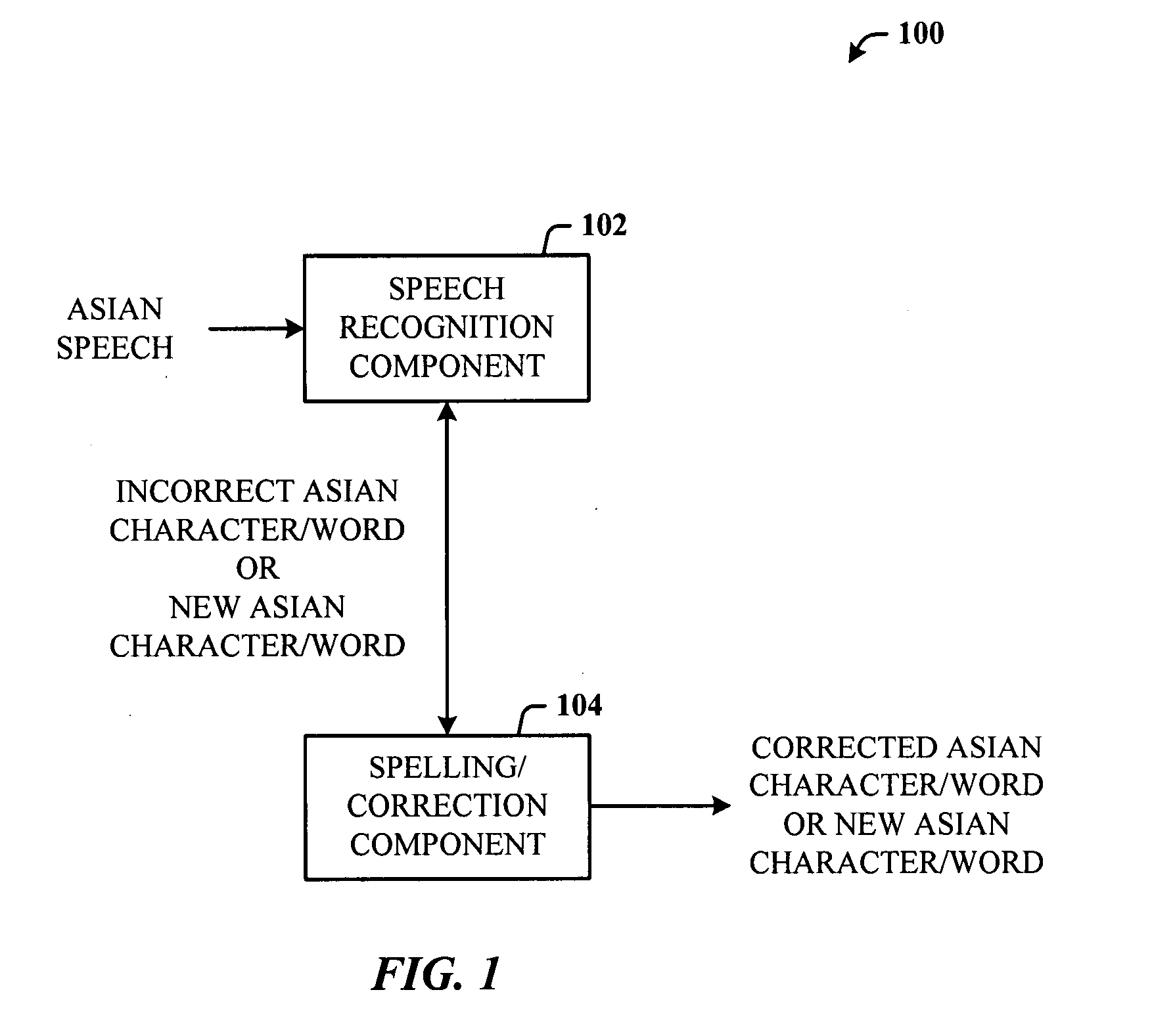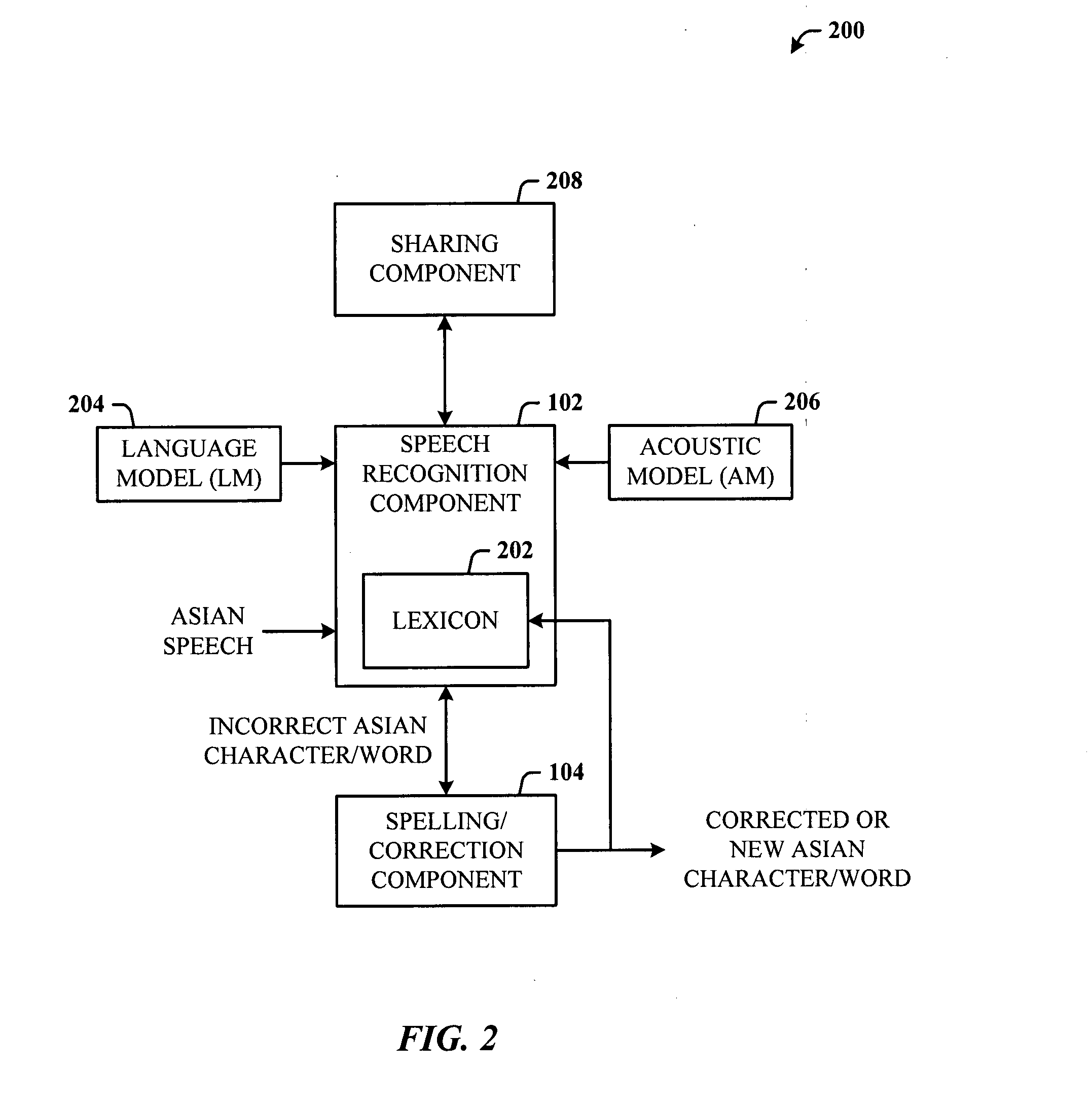Recognition architecture for generating Asian characters
a recognition architecture and character technology, applied in speech recognition, speech analysis, instruments, etc., to achieve the effect of reducing or eliminating misrecognition of words, facilitating the input of chinese characters, and facilitating boundary determination
- Summary
- Abstract
- Description
- Claims
- Application Information
AI Technical Summary
Benefits of technology
Problems solved by technology
Method used
Image
Examples
Embodiment Construction
[0042]Disclosed herein is architecture that provides algorithms, data, and at least a user interface (UI) that includes a spelling mode for Asian speech recognition and obtaining new words / characters or correction of misrecognized characters.
[0043]Reference is now made to the drawings, wherein like reference numerals are used to refer to like elements throughout. In the following description, for purposes of explanation, numerous specific details are set forth in order to provide a thorough understanding thereof. It may be evident, however, that the novel embodiments can be practiced without these specific details. In other instances, well-known structures and devices are shown in block diagram form in order to facilitate a description thereof.
[0044]Referring initially to the drawings, FIG. 1 illustrates a computer-implemented translation system 100. The system 100 includes a speech recognition component 102 that receives Asian voice or speech input, and performs recognition process...
PUM
 Login to View More
Login to View More Abstract
Description
Claims
Application Information
 Login to View More
Login to View More - R&D
- Intellectual Property
- Life Sciences
- Materials
- Tech Scout
- Unparalleled Data Quality
- Higher Quality Content
- 60% Fewer Hallucinations
Browse by: Latest US Patents, China's latest patents, Technical Efficacy Thesaurus, Application Domain, Technology Topic, Popular Technical Reports.
© 2025 PatSnap. All rights reserved.Legal|Privacy policy|Modern Slavery Act Transparency Statement|Sitemap|About US| Contact US: help@patsnap.com



